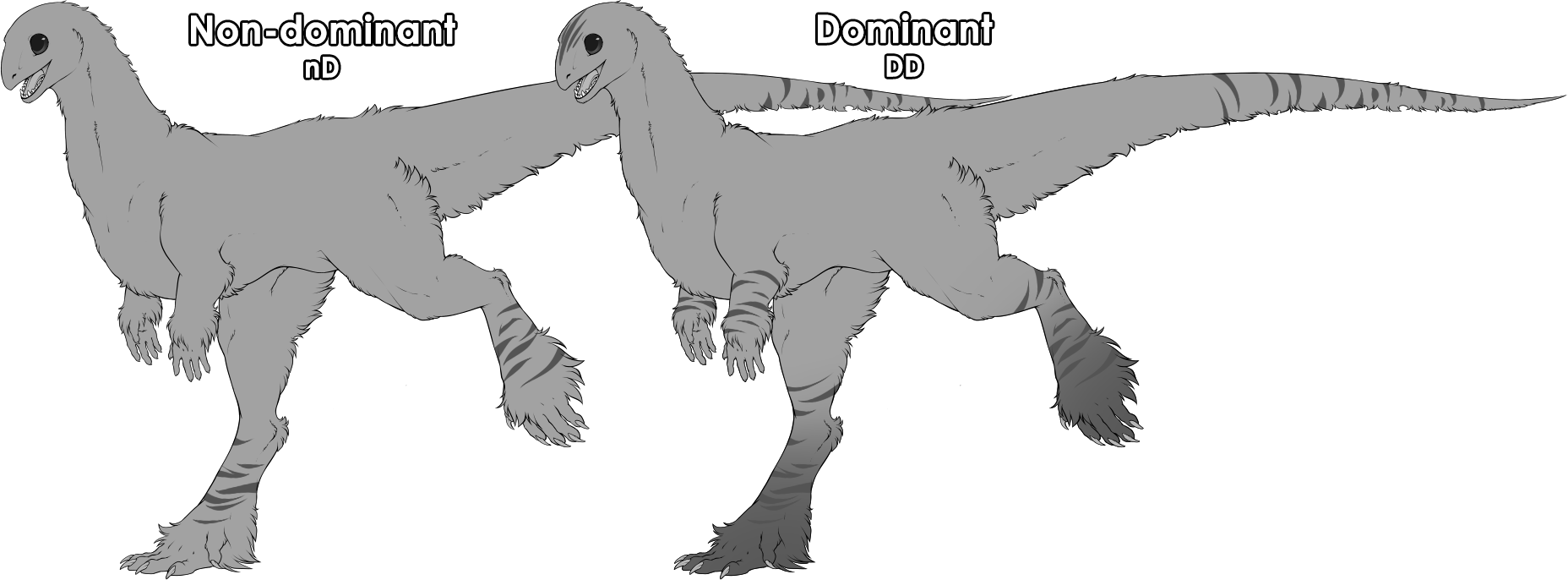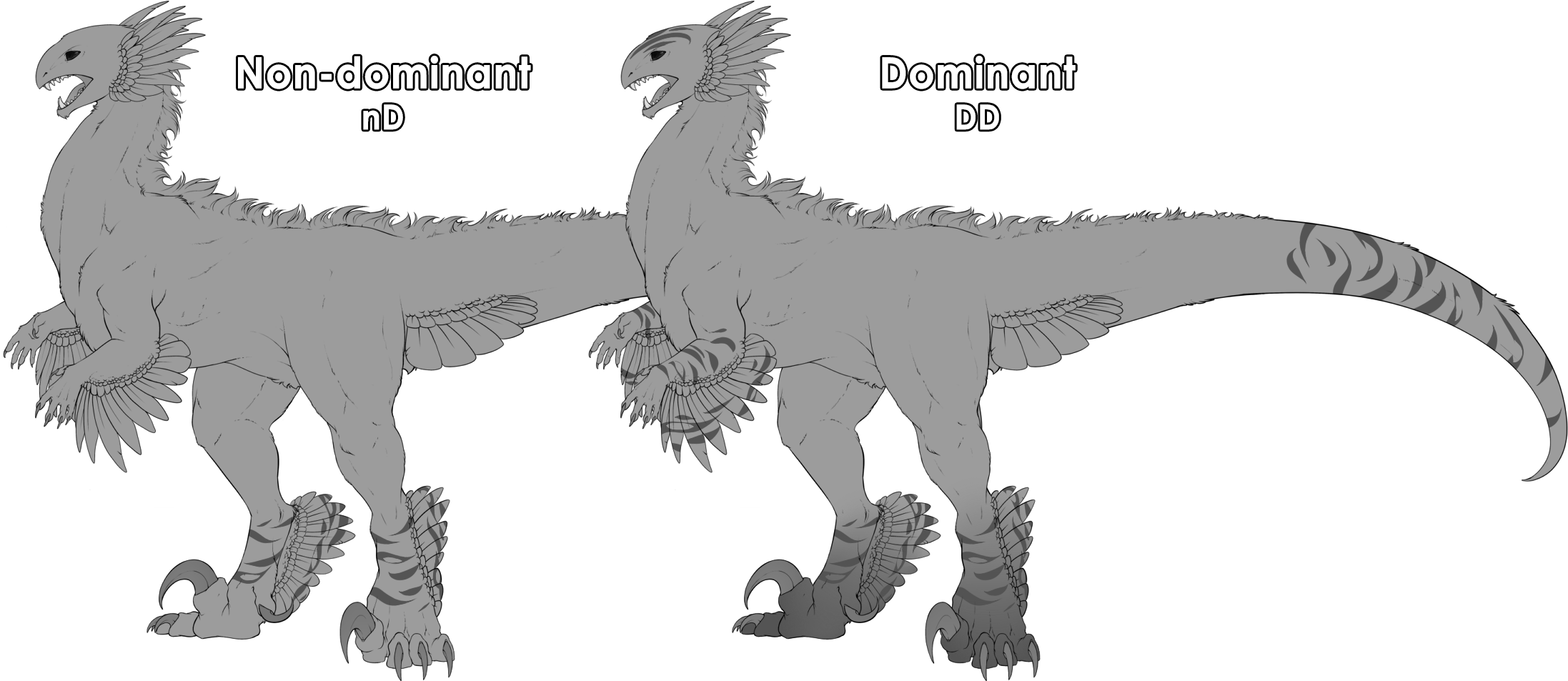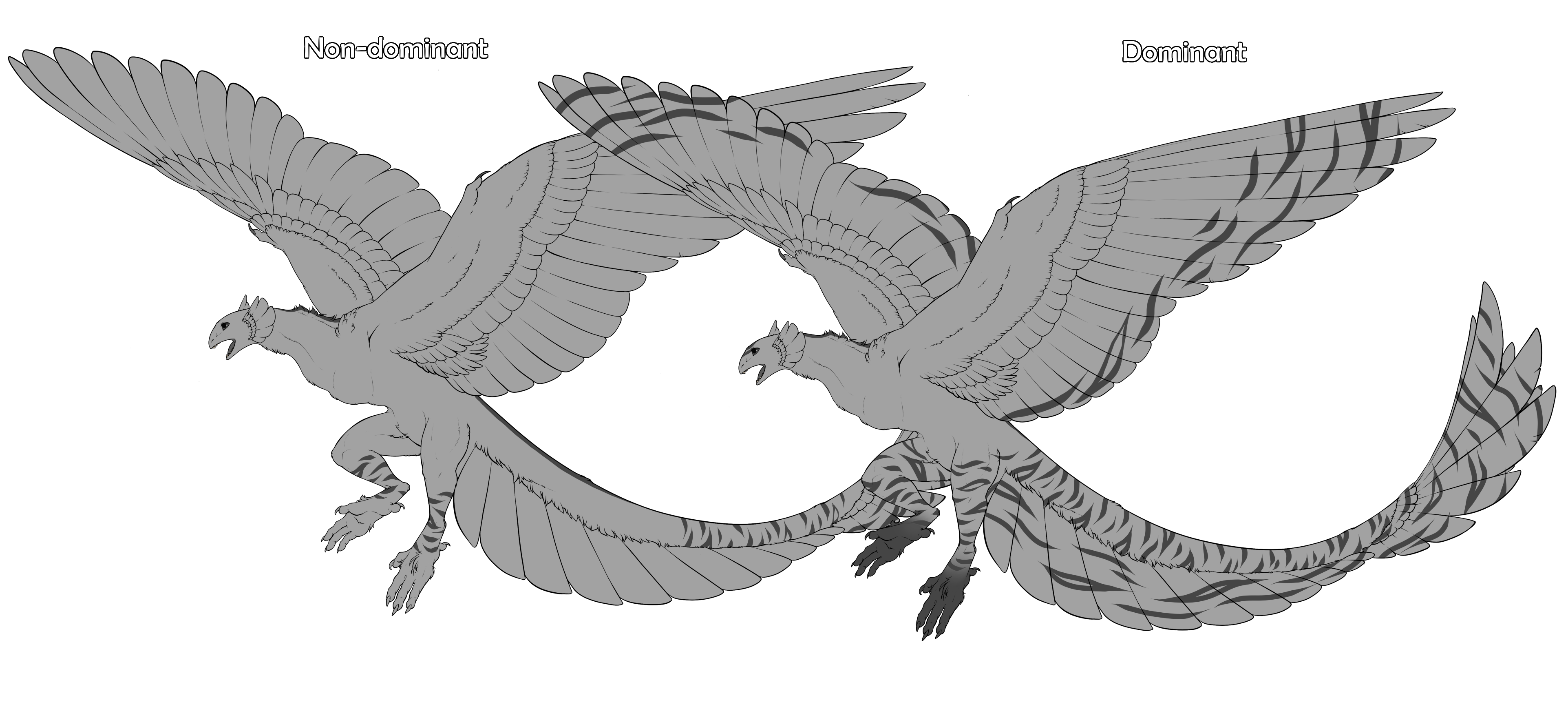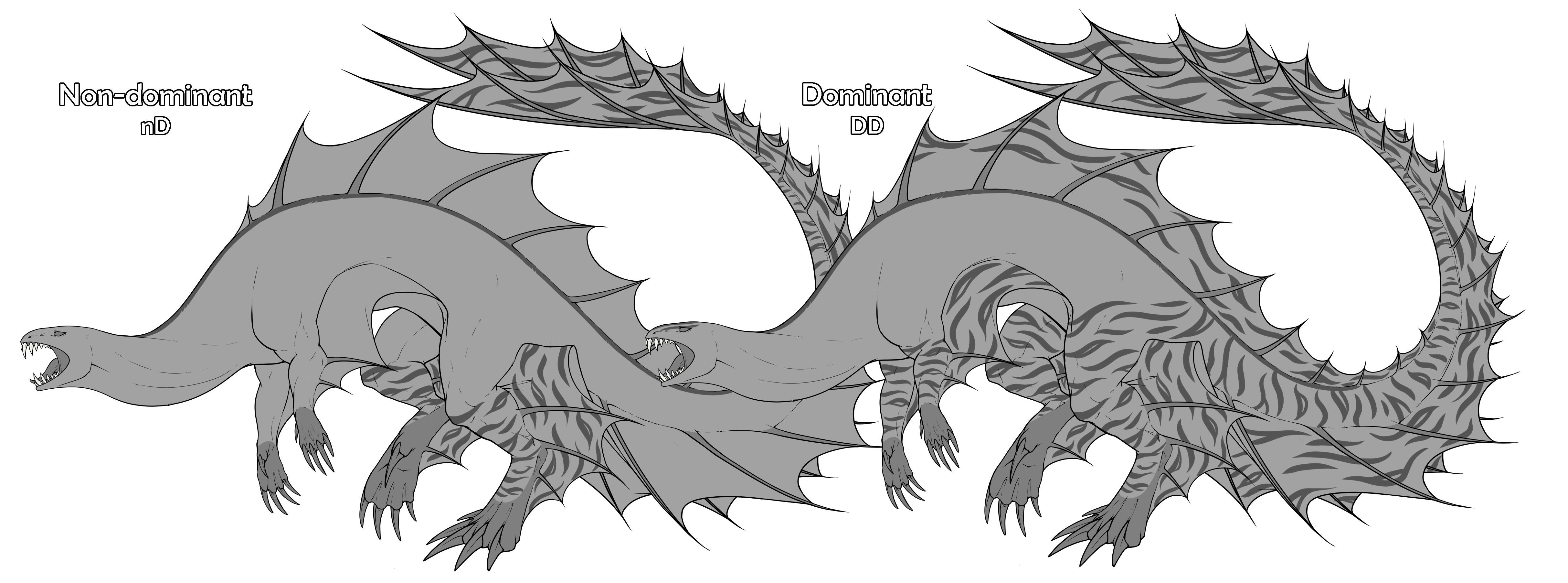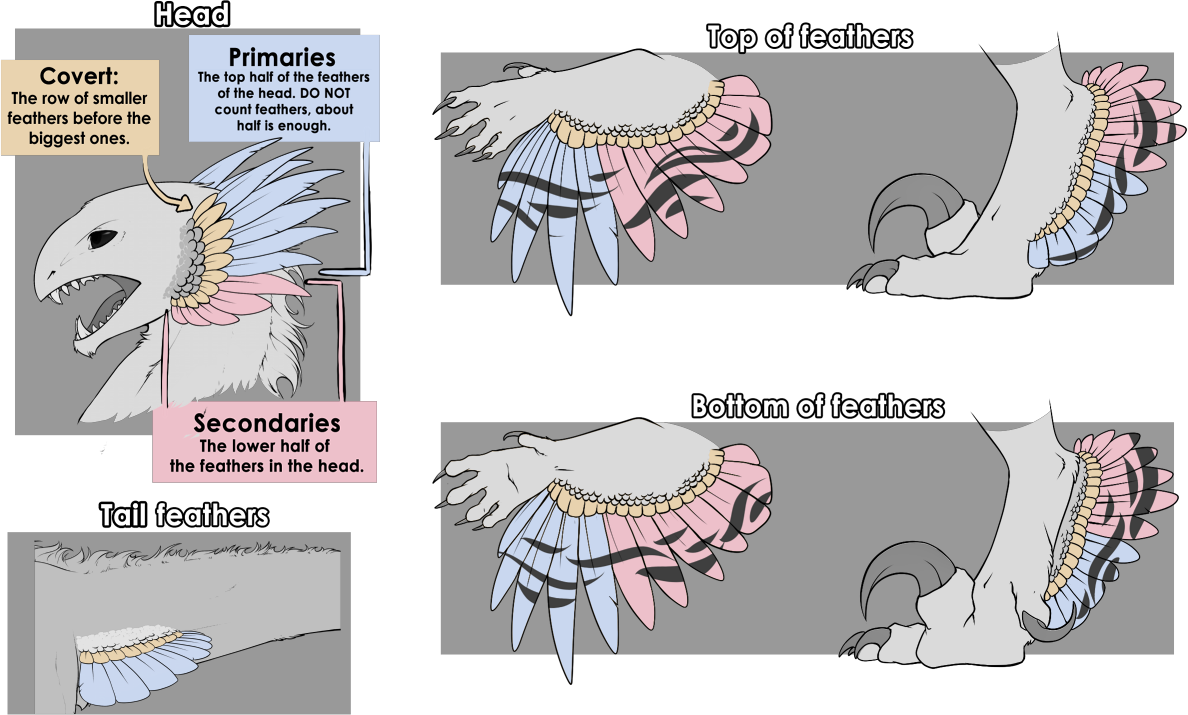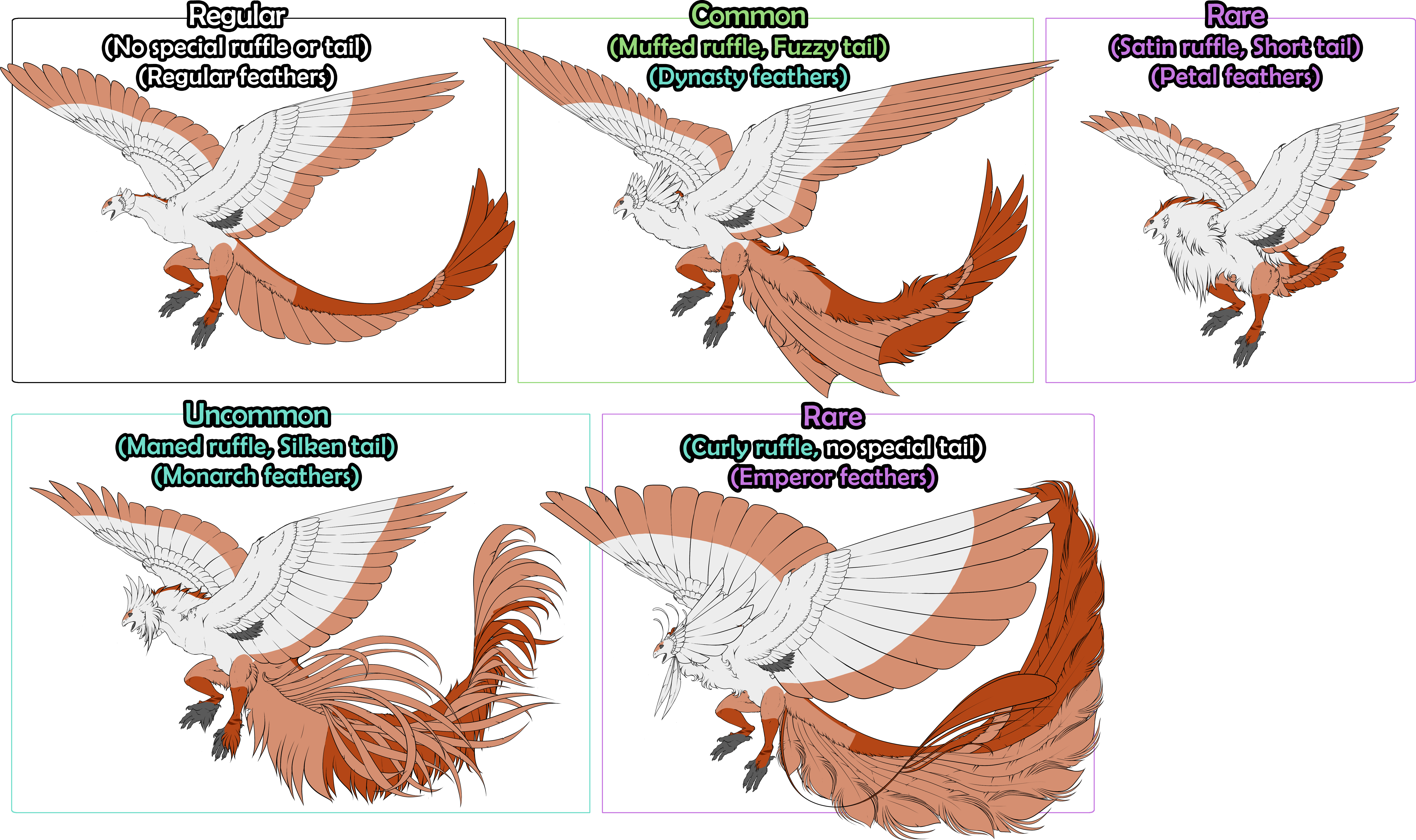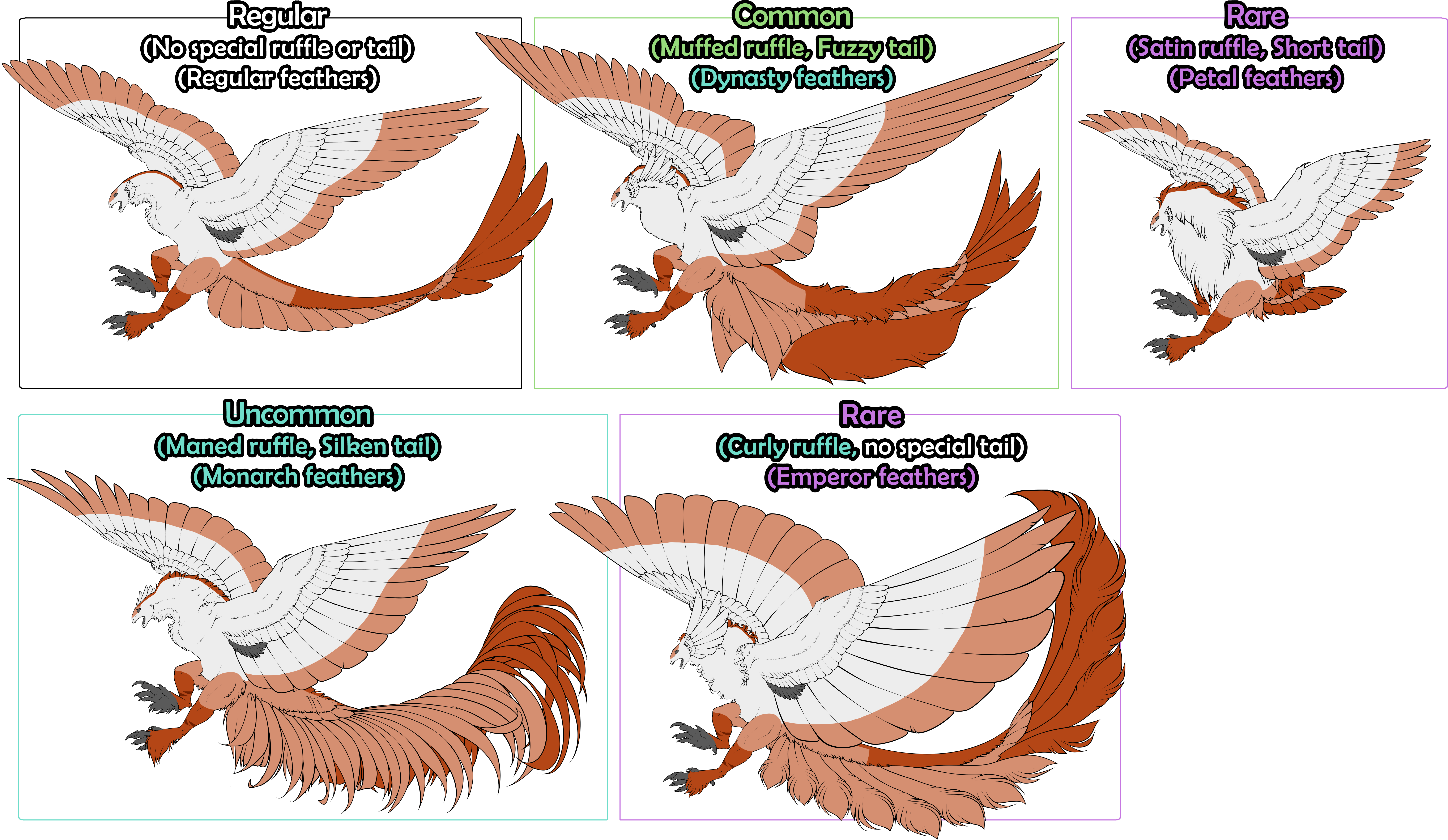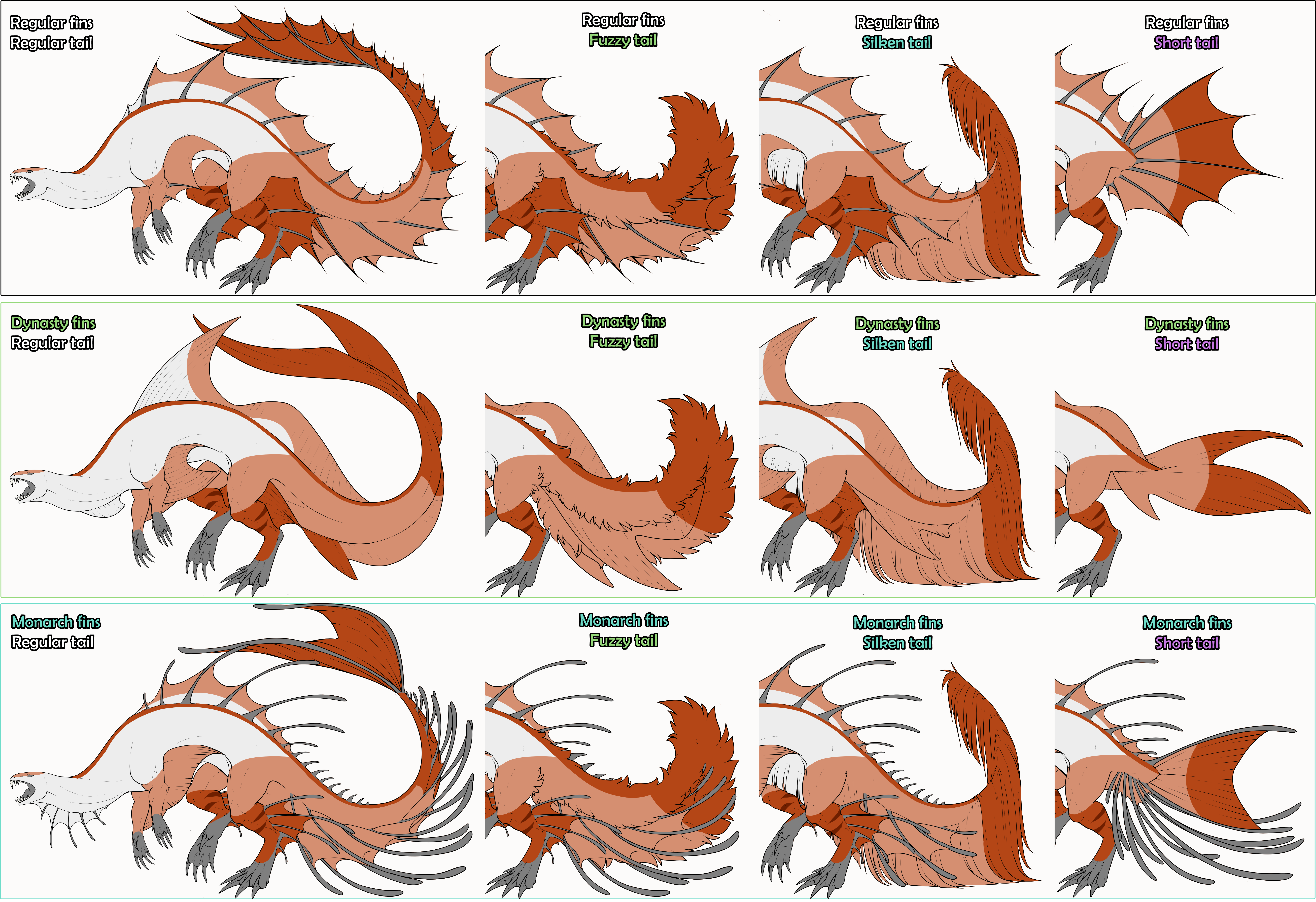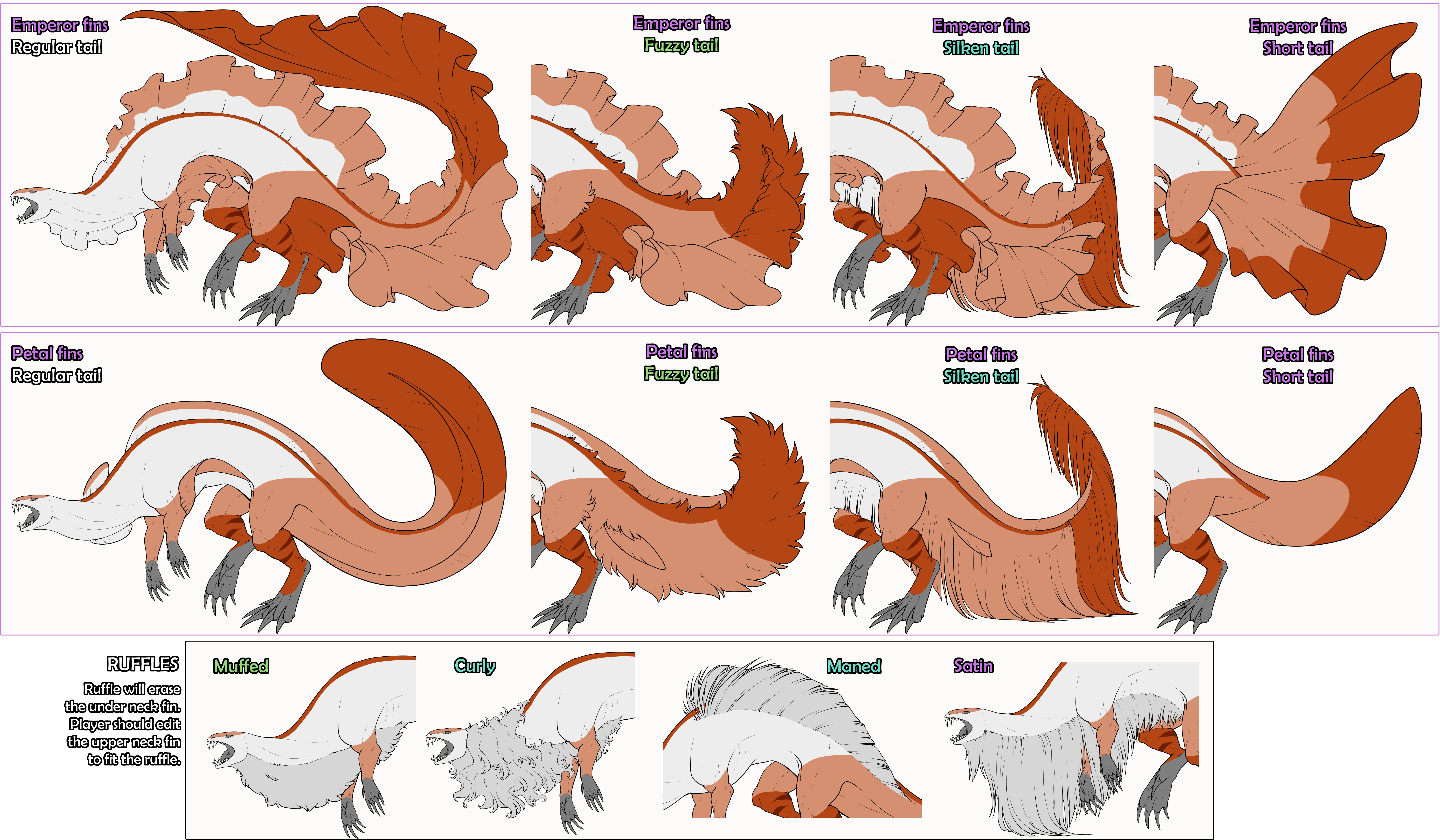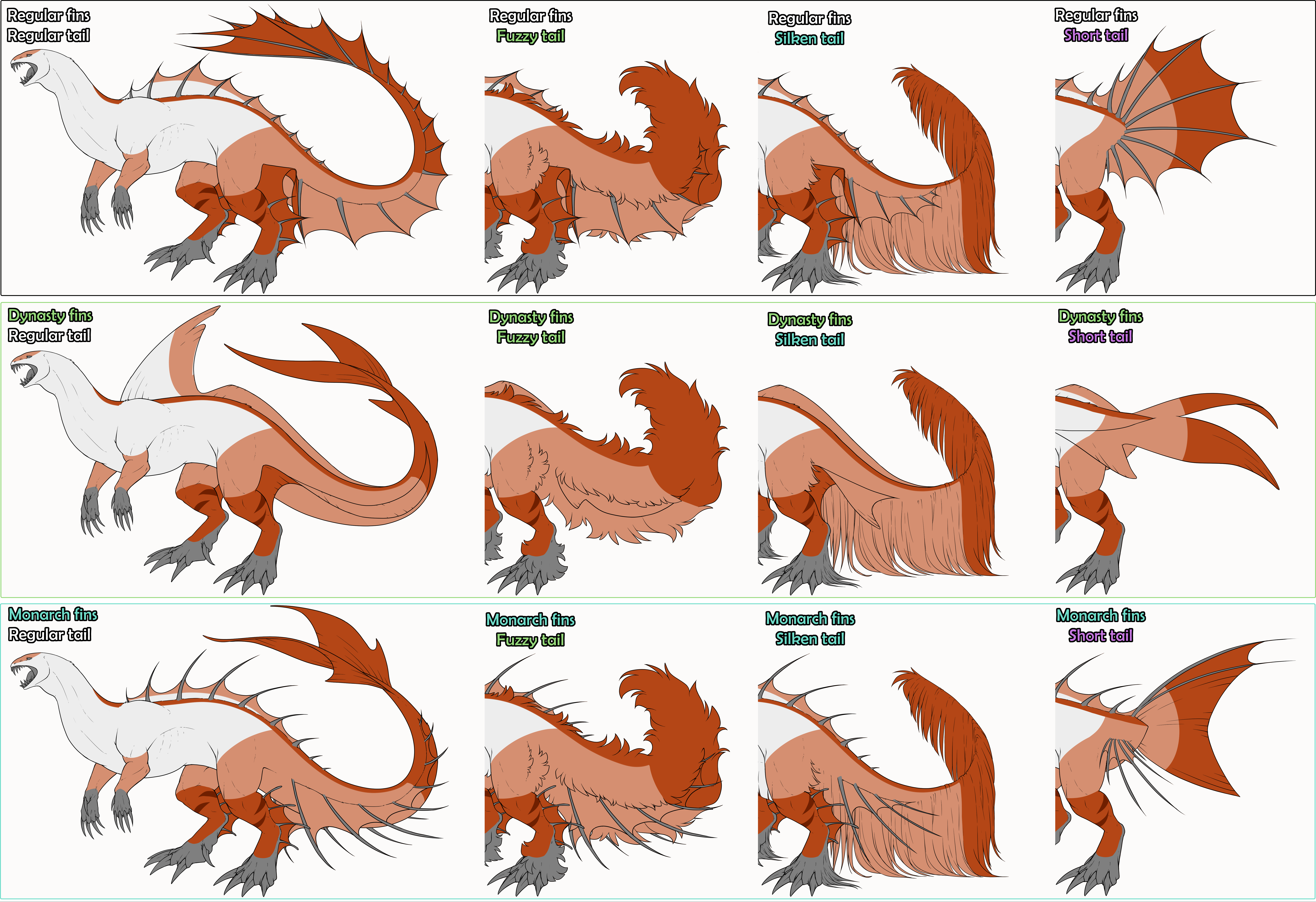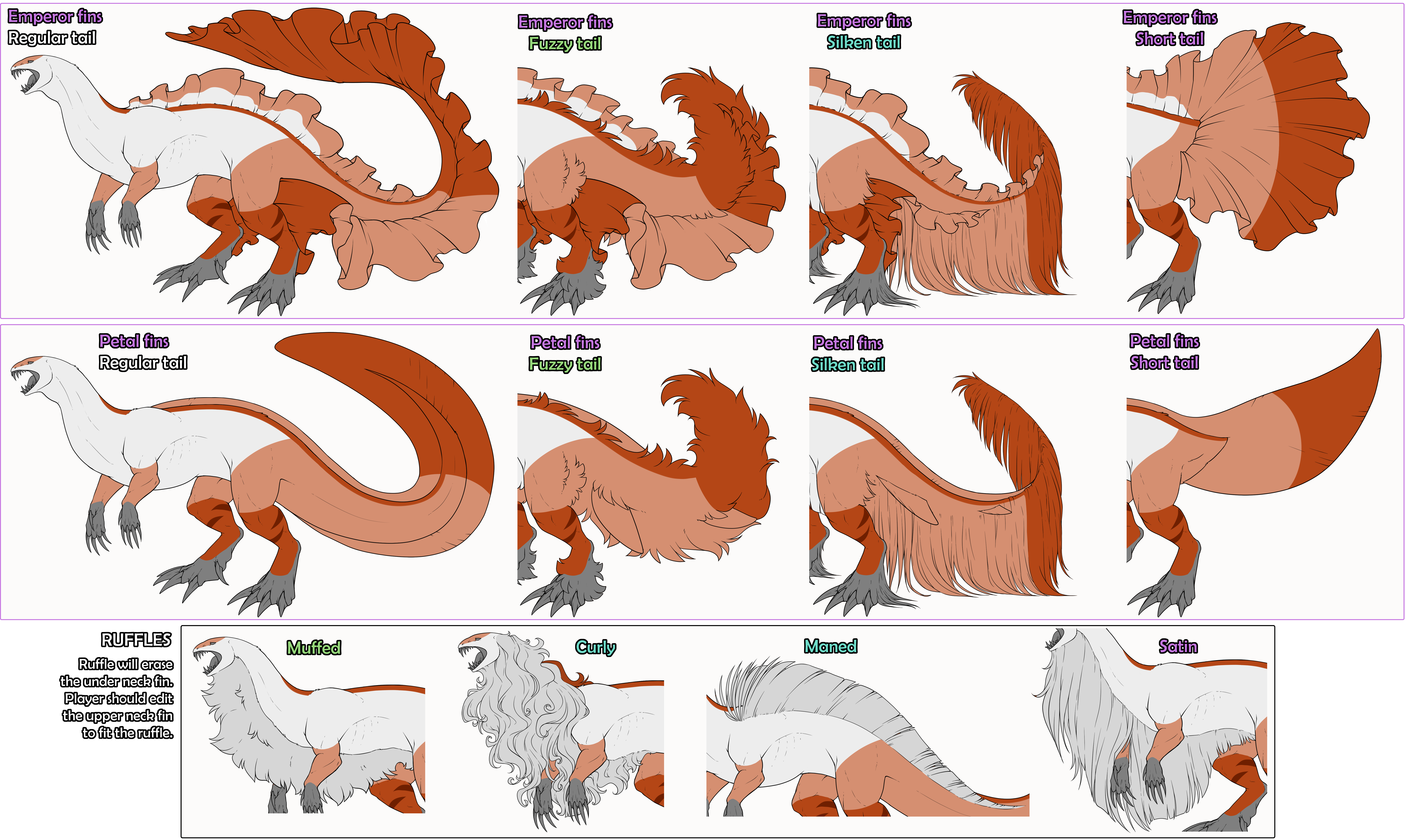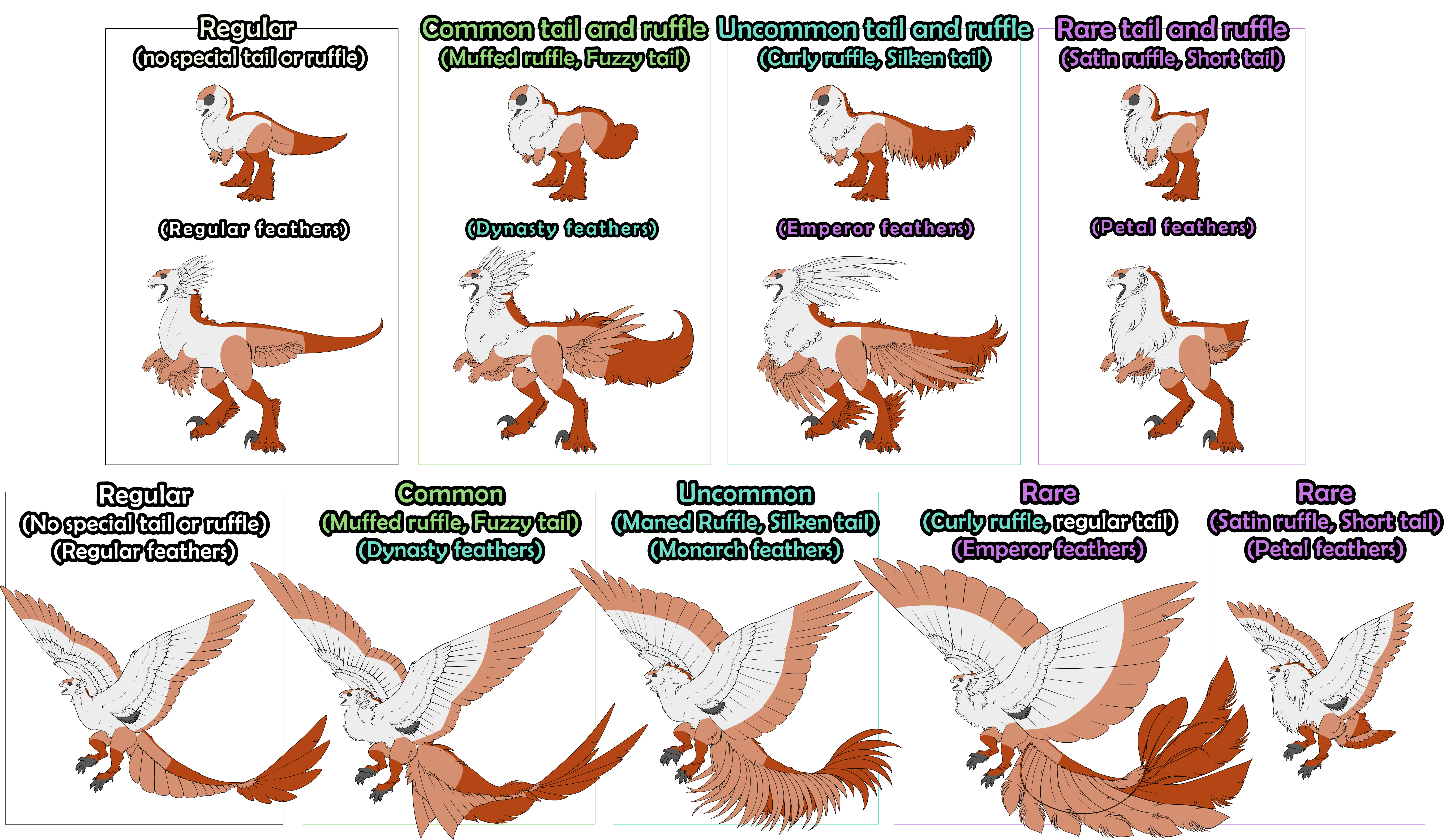Edge allowances
 Hard
HardSymmetry allowances

 Can be symmetrical or asymmetrical
Can be symmetrical or asymmetricalColor Allowances:
 Must be darker
Must be darker
A Guide to Dun
Dun Stripes
Allowed stripes
Dun can create a range of stripe shapes. This includes full rings, but theres a few rules! The green in the image below show correct examples!
- Stripes that wrap all the way around a limb must have "branches" to distinguish it from Ringed
- Dun stripes should always be hard edged
- The stripes should run across and around the limb its affecting
Disallowed Stripes
The red stripes in the image below are stripes that are not allowed! These include:
- Full non-branching stripes (these are too much like Ringed)
- Stripes with anything other than a hard edge
- Stripes that run the length of the limb (horizonal on the tail, or vertical on the legs/arms)
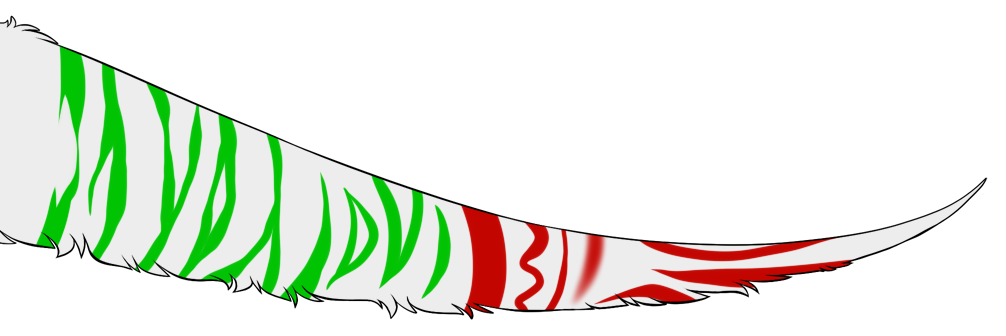
Dun on Feathers and Fins
In dominant form, Dun may appear on the feathers of Prairies and Aerials. These stripes should run across the width of the feathers but keep in mind to prevent the stripes from resembling Ringed!Similarly to aerial and prairie feathers, dun also runs across the width of aquatic fins!
Dun Ranges
Dun may appear in its allowed ranges
Minimum
The minimum area of a kukuri's body Dun should cover
The minimum area of a kukuri's body Dun should cover
nD
The maximum area of a kukuri's body recessive Dun can cover
The maximum area of a kukuri's body recessive Dun can cover
DD
The maximum area of a kukuri's body dominant Dun can cover
The maximum area of a kukuri's body dominant Dun can cover
Dun may appear in its allowed ranges
Minimum
The minimum area of a kukuri's body Dun should cover
The minimum area of a kukuri's body Dun should cover
nD
The maximum area of a kukuri's body recessive Dun can cover
The maximum area of a kukuri's body recessive Dun can cover
DD
The maximum area of a kukuri's body dominant Dun can cover
The maximum area of a kukuri's body dominant Dun can cover
Dun may appear in its allowed ranges
Minimum
The minimum area of a kukuri's body Dun should cover
The minimum area of a kukuri's body Dun should cover
nD
The maximum area of a kukuri's body recessive Dun can cover
The maximum area of a kukuri's body recessive Dun can cover
DD
The maximum area of a kukuri's body dominant Dun can cover
The maximum area of a kukuri's body dominant Dun can cover
Dun may appear in its allowed ranges
Minimum
The minimum area of a kukuri's body Dun should cover
The minimum area of a kukuri's body Dun should cover
nD
The maximum area of a kukuri's body recessive Dun can cover
The maximum area of a kukuri's body recessive Dun can cover
DD
The maximum area of a kukuri's body dominant Dun can cover
The maximum area of a kukuri's body dominant Dun can cover
